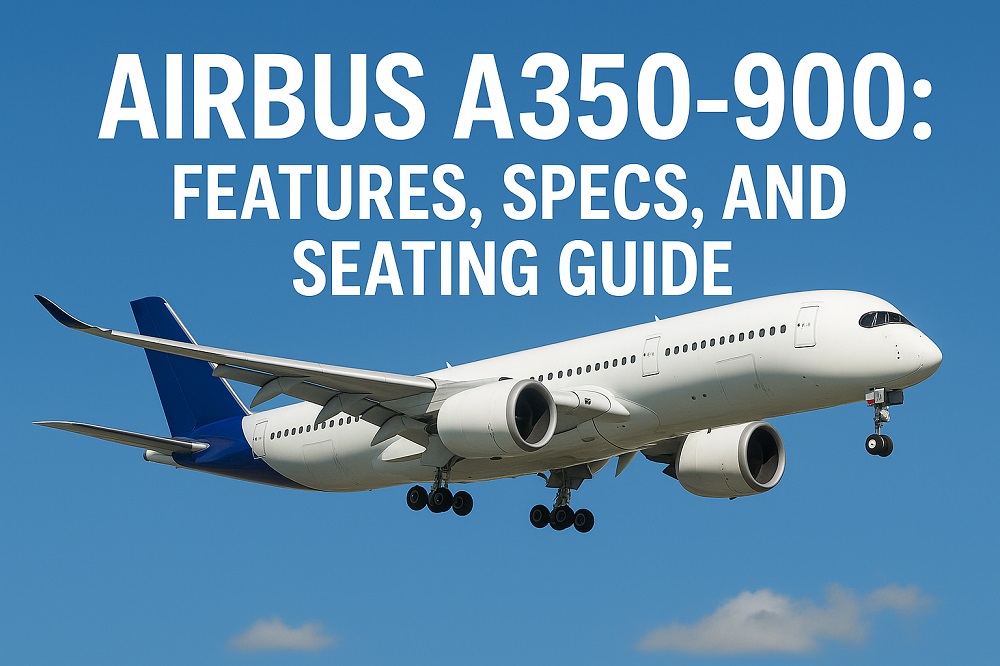Discover the remarkable Airbus A350-900, a groundbreaking aircraft that’s revolutionizing long-haul travel with its innovative design, superior comfort, and exceptional efficiency. Let’s explore what makes this modern marvel stand out in commercial aviation.
Overview of the Airbus A350-900
The Airbus A350-900 represents a pinnacle of modern aviation engineering, combining cutting-edge technology with unparalleled passenger comfort. This wide-body aircraft has established itself as a preferred choice for airlines worldwide, delivering exceptional performance across various routes.
- Advanced materials construction for improved efficiency
- State-of-the-art aerodynamics for reduced fuel consumption
- Optimized design for both regional and ultra-long-haul flights
- Enhanced passenger comfort features
- Superior environmental performance
Introduction to the Airbus A350-900
As the cornerstone of Airbus’s long-haul fleet, the A350-900 addresses the growing demand for efficient and environmentally conscious air travel. Part of the A350 XWB (eXtra Wide Body) family, this aircraft delivers an exceptional cabin environment with:
- Panoramic window views for enhanced passenger experience
- Reduced noise levels for quieter flights
- Redesigned seats with improved headrests
- Advanced entertainment systems including satellite TV
- Superior air quality management
Development and Launch
The A350-900’s journey began in the early 2000s as Airbus’s response to Boeing’s 787 Dreamliner and 777 series. The program’s official launch in 2006 marked the beginning of a new era in aviation technology, culminating in its first commercial flight with Qatar Airways in January 2015.
Key Features of the Airbus A350-900
The A350-900 stands as a testament to modern aviation innovation, incorporating numerous groundbreaking features that enhance both performance and passenger experience.
Advanced Aerodynamics and Design
The aircraft’s exceptional aerodynamic efficiency comes from:
- Sleek, streamlined design minimizing drag
- High-aspect-ratio wings with distinctive curved wingtips
- Carbon fiber reinforced plastic (CFRP) construction
- Larger windows for enhanced natural lighting
- Optimized fuselage design for reduced fuel consumption
Innovative Cabin Experience
The A350-900’s cabin design prioritizes passenger comfort through:
- Wider cabin space for improved passenger comfort
- Advanced air management system refreshing cabin air every 2-3 minutes
- LED lighting system mimicking natural daylight cycles
- Larger overhead bins for additional storage
- Unique flat floor design enhancing spaciousness
Cutting-edge Technology and Systems
The aircraft features state-of-the-art technology including:
- Interactive cockpit displays with intuitive controls
- Advanced fly-by-wire system for enhanced safety
- High-definition entertainment screens
- High-speed Wi-Fi connectivity
- On-demand content and satellite TV options
Specifications of the Airbus A350-900
The A350-900 combines exceptional performance with environmental responsibility, featuring advanced materials and aerodynamics that deliver superior efficiency and passenger comfort. Its clean-sheet design represents a significant leap forward in commercial aviation technology, offering airlines an optimal balance of capacity, range, and operating costs.
Technical Specifications
| Dimension | Measurement |
|---|---|
| Overall Length | 66.80 meters |
| Cabin Length | 51.04 meters |
| Fuselage Width | 5.96 meters |
| Maximum Cabin Width | 5.61 meters |
| Wingspan | 64.75 meters |
| Height | 17.05 meters |
| Track | 10.60 meters |
| Wheelbase | 22.18 meters |
The A350-900’s precise measurements reflect Airbus’s commitment to balancing size, weight, and performance. The extensive use of lightweight carbon fiber reinforced plastic in its structure enables enhanced fuel efficiency without compromising strength or durability.
Performance and Range
The Airbus A350-900 demonstrates exceptional performance capabilities, particularly in its impressive range of 15,742 kilometers (8,500 nautical miles). This extensive reach enables airlines to operate ultra-long-haul routes efficiently, connecting distant city pairs with non-stop flights.
- Advanced Rolls-Royce Trent XWB-84 engines for optimal thrust
- Superior aerodynamic design reducing drag
- Efficient performance across all flight phases
- Optimized route network capabilities
- Enhanced operational flexibility
Fuel Efficiency and Environmental Impact
Setting new standards in environmental performance, the A350-900 achieves remarkable fuel efficiency through its advanced design and technology. The aircraft delivers a 25% reduction in fuel burn and CO₂ emissions compared to previous generation aircraft, supported by its substantial fuel capacity of 166,488 liters.
- 25% reduction in fuel consumption
- Significant decrease in CO₂ emissions
- Industry-leading Rolls-Royce Trent XWB-84 engines
- Maximum fuel capacity of 166,488 liters
- Advanced aerodynamic design for reduced drag
Seating Guide for the Airbus A350-900
The A350-900 offers exceptional seating flexibility with configurations ranging from 300 to 350 passengers in a typical three-class layout, extending to a maximum capacity of 440 passengers. This versatility allows airlines to optimize their cabin layouts for different routes and market demands while maintaining superior comfort standards.
Cabin Layout and Seating Configuration
- Economy Class: 3-3-3 configuration (nine-across)
- Premium Economy: 2-4-2 configuration (eight-across)
- Business Class: 1-2-1 or 2-2-2 configuration
- Premium Economy seat width: 49.5 cm with 5 cm armrests
- Available in Long Haul, Ultra Long Range, and Medium Haul variants
Passenger Comfort and Amenities
- Lower cabin pressure altitude (6,000 feet equivalent)
- Enhanced humidity levels for improved comfort
- Air renewal every 2-3 minutes
- State-of-the-art entertainment systems with HD screens
- Wi-Fi connectivity throughout the flight
- Reduced cabin noise levels
Airlines Operating the Airbus A350-900
Since its 2015 debut, the A350-900 has become integral to many leading airlines’ fleets, including Lufthansa, Singapore Airlines, Cathay Pacific, and Qatar Airways. These carriers utilize the aircraft’s capabilities to optimize their route networks, enhance fuel efficiency, and deliver superior service on routes ranging from shorter intercontinental flights to ultra-long-haul journeys exceeding 15 hours.
Major Airlines and Routes
- Qatar Airways – Launch customer, operated first commercial A350-900 flight (Doha to Frankfurt) on January 15, 2015
- Singapore Airlines – Operates ultra-long-haul routes, including Singapore-New York service
- Lufthansa – Serves key intercontinental routes between German hubs and North America/Asia
- Cathay Pacific – Connects Hong Kong with Europe and North America
- Other Notable Operators – Delta Air Lines, Finnair, and China Airlines
Customer Feedback and Reviews
Passenger feedback on the Airbus A350-900 has been predominantly positive, with travelers highlighting several key features:
- Spacious cabin environment
- Large panoramic windows
- Exceptional cabin quietness
- Advanced air management system reducing jet lag
- Modern amenities and features
While the overall reception remains positive, some passengers have noted specific considerations:
- Extra-wide body design may result in window seats being closer to sidewalls in certain configurations
- Some travelers prefer seating layouts of previous generation aircraft (A330/A340)
Despite individual preferences, the consensus among airlines and passengers confirms the A350-900 as a significant advancement in long-haul travel, successfully combining efficiency, comfort, and environmental performance.
- Airbus A320: Specifications, Features, and Seat Maps
- Airbus A340-300: Features, Specifications, and Performance
- Airbus A220: Features, Specs, and Benefits of the A220 Family
- Airbus Beluga: The Unique Transport Aircraft
- Airbus A340-600: Features, Specifications, and Performance
- Airbus A350: Features, Specs, and Innovations
- Airbus A319: Specifications, Seat Maps, and Features
- Airbus A321neo: Features, Specs, and Benefits
- Airbus A321: Specifications, Features, and Seat Maps
- Airbus A380: The Ultimate Guide to the World’s Largest Passenger Aircraft
- Airbus A330-300: Specifications, Seat Maps, and Amenities

